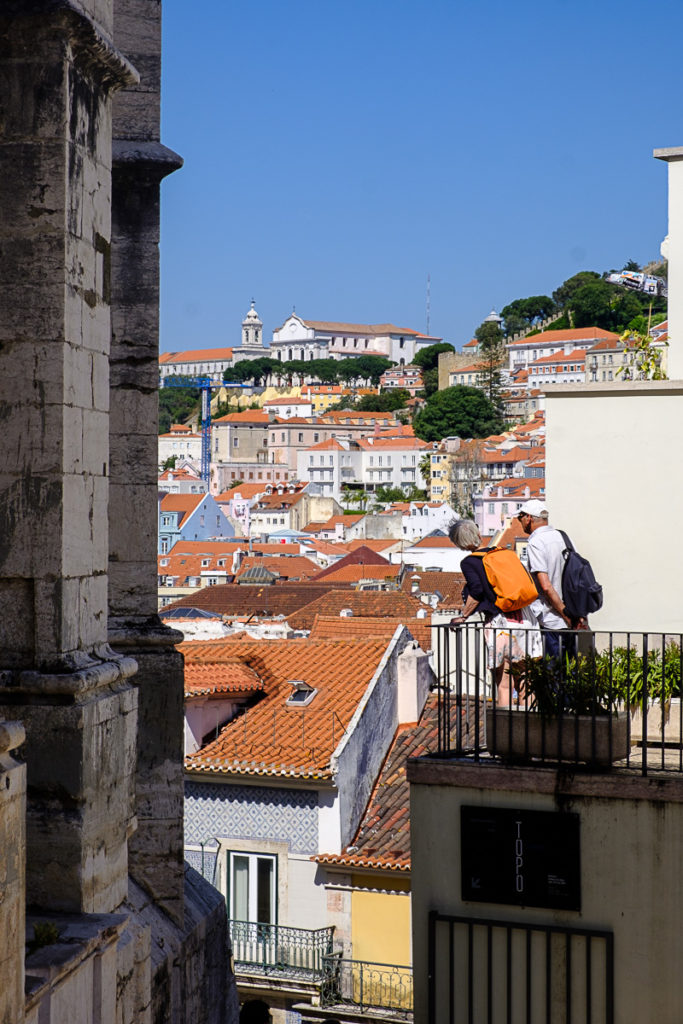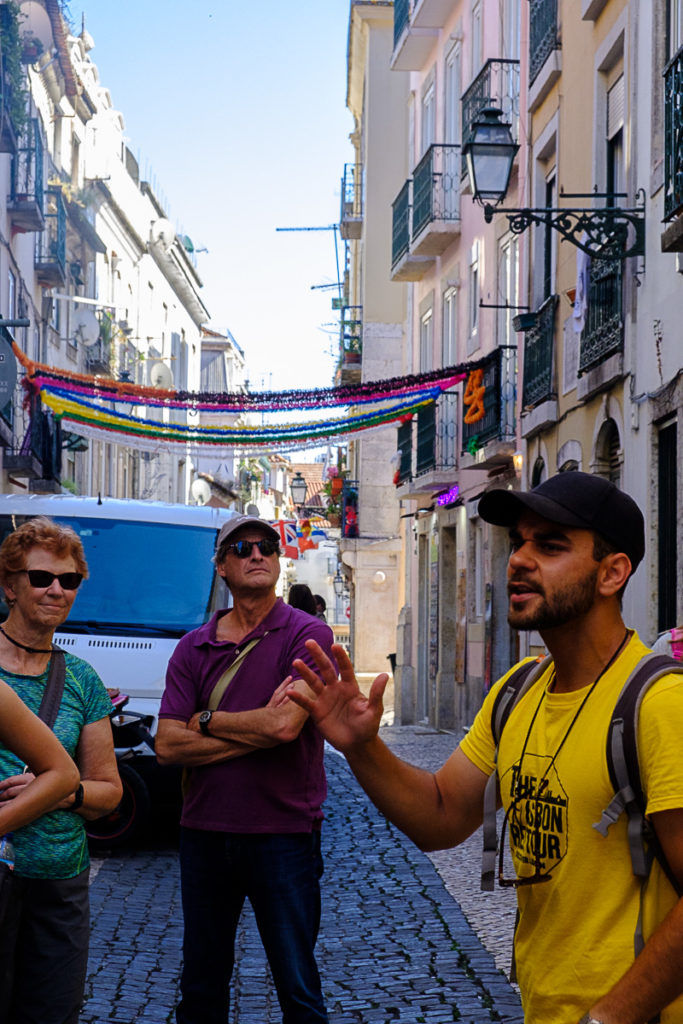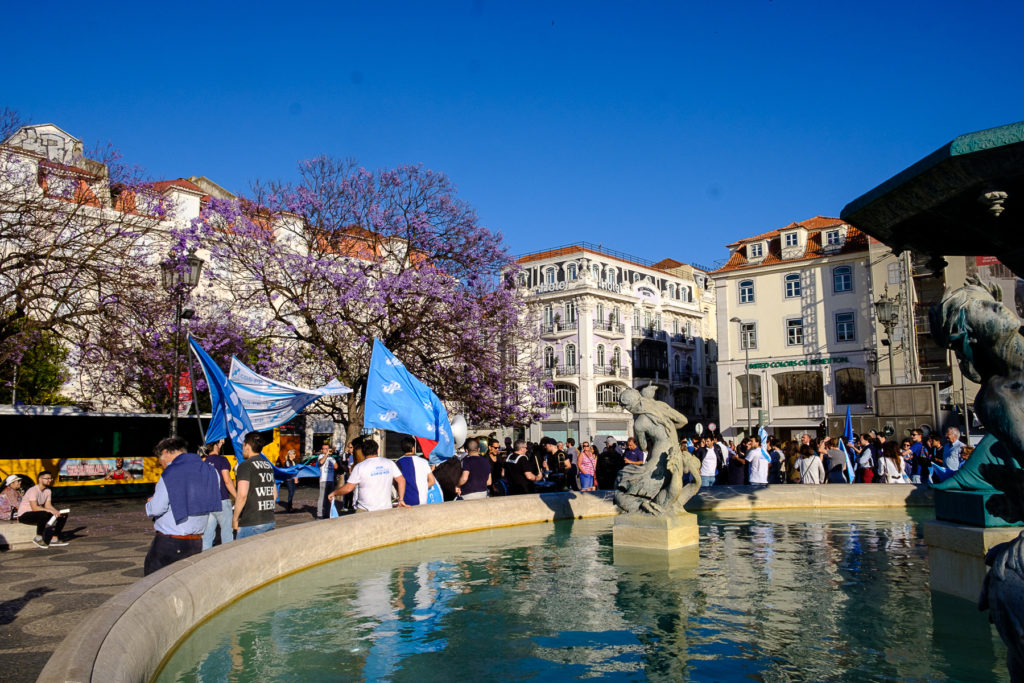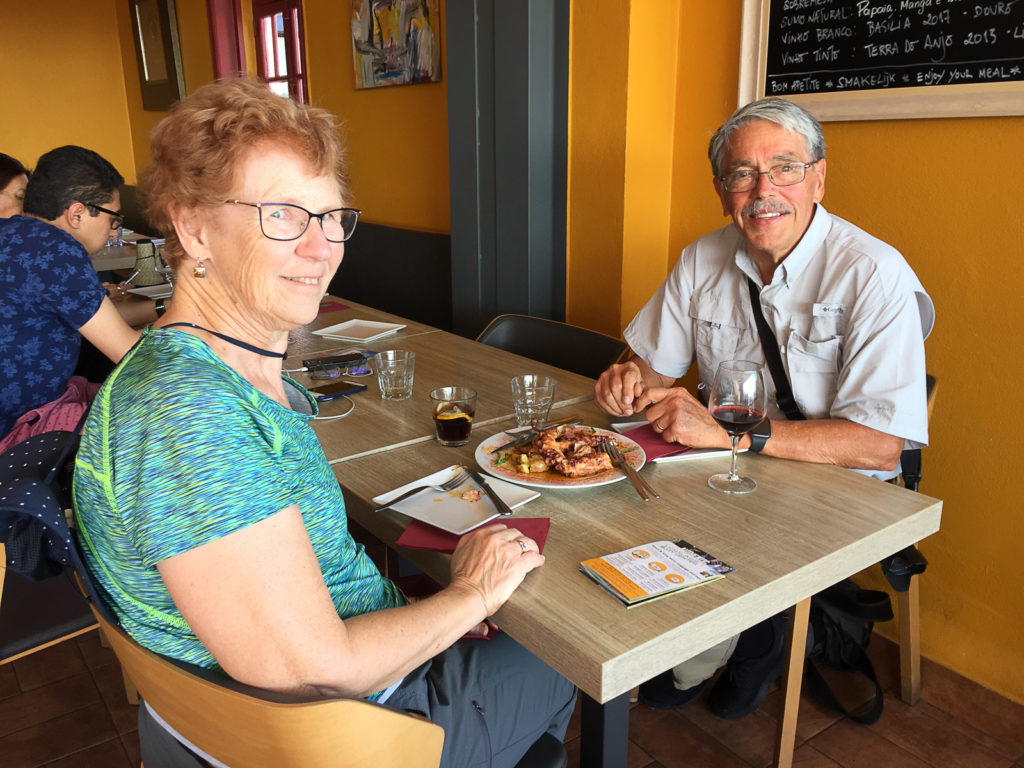Some would argue today was a disaster, at least it started that way:
- In Philadelphia instead of going to the Irish Pub for a sit-down dinner we fall into the Irish pub’s quick dine kiosk across the aisle from the main event.
- Our flight from Philadelphia is delayed for three hours; they have to find a replacement airplane (one engine is bad on the first bird)
- We arrive at Lisbon a little after noon. Our Free Walking Tour Lisbon departs at 2:30. Will we clear immigration, get our bags, find our driver, get to the hotel and check in in time to meet our tour? Tension.
- We lose 20 minutes searching for our driver.
- On the drive to the hotel we get an email informing us that our tour guide is sick, and our walking tour is canceled.
- I find another tour starting at 3:00 at the Dom Pedro IV statue. Look for the guy with a white umbrella.
- 2:55 we’re at the statue (which, thankfully, is across the street from our hotel) but no white umbrella. Instead, a guy with a yellow umbrella. We go with him.
From there, we had a nice 2:30 walk through the old sections of Lisbon. Someday I’ll figure out where we went on a map but it’s too late to do that tonight. Sorry!
Similarly, it’s too late to get into the details of Portuguese history. I can summarize it by saying:
- This place has been overrun by one herd of invaders after another. You’ve got your Celts, your Romans, your Visigoths, Moors and Christian crusaders. The Spanish ran the place for a while; so did Napoleon. The Brits have always had a strong alliance with corresponding political and economic influence.
- Bartolomeu Diaz found a way to get to the Cape of Good Hope. Vasco de Gama built on that success to establish a trade route to India and the sources of spice craved by Europe. Alfonso de Albuquerque developed the spice trade, bringing untold wealth to King Manuel back in Lisbon. He spent the dough on palaces and crusades to rid the world of Muslims (no wonder we have problems today). This all took place mostly during the era from 1490 to 1570.
- Diaz and de Gama, in the course of discovering the Cape of Good Hope route, ran into Brazil. Portugal exploited Brazil, bringing untold wealth back to Lisbon in the form of gold in the 17thand 18th
- Today the Portuguese extract untold Euros and dollars from tourists around the world. Unfortunately, the tourist jobs don’t pay very well but, hey, at least the unemployment rate is at historic lows.
Our walking tour group was interesting: We were the oldest members of the twenty-odd person group – by a decade or two. And there were two of only three or four from the U.S. The remainder came from all over the world and, except for a couple of Aussies and Irish, they all come from countries where English is not the mother tongue. Not your typical Overseas Adventure Tour group we’re used to, that’s for sure. I’ll bet there wasn’t a single knee replacement or afib case in the entire group, present company excepted.
The “free” guided tour isn’t, of course, free. Tips are solicited and expected. But it leaves everyone free to value the tour and pay accordingly. It turns out that freetours.com and the local free tour agency (of which there are several in Lisbon and every other city you care to name) get a cut before the tour guide takes home his or her share.
The tour guide also up sells the customers to take a paid trip later on. We, of course, being the seasoned, savvy travelers that we are, fell into Pedro’s trap. We signed up for the 7:00 PM Fado tour. We hiked back to the hotel by 6:45, giving us enough time to, well, you know, and still be at the Dom Pedro IV statue to take the next trip.
The Fado trip was worth the pain. We hiked up a whole bunch of new hills (Lisbon is nothing but hills; there isn’t a flat spot to be found) to a restaurant in the Alfama district where Fado has its current home. There were two parts to the evening (not counting the cardio): tapas-like dishes, including smoked meats and sausages, cheese, bread and a fizzy white wine and the Fado music.
Fado is a music of the people, somewhat like blues in the sense that the themes deal with the everyday lives of the common people. The music tonight was provided by two guys playing guitars, including a 12-string Portuguese guitar, who accompanied, in turn a woman and two men. One song said something like, “I live to gaze into your eyes even though you aren’t mine.” Another said, “Let them be crazy in their love just like we used to be.” You get the idea. The musicians were excellent, the food hit the spot and we’re glad we did it.
But then we were all by ourselves to find our way down from the top of Mount Whatsitsname to our hotel some ¾ of a mile away. Google Maps performed admirably, we didn’t get mugged (Lisbon is said to be a very safe city) and my iPhone had 1% charge remaining when we got into the hotel elevator. Judy’s logged 15,000 steps, 20 flights of stairs and 5 miles on her shoes today. Not bad for 11 hours on the tourist trail.
Tomorrow we’re on a guided tour to nearby Sintra.
That’s it, time for bed. I’ll find a couple of snap shots to give you a visual idea.



































